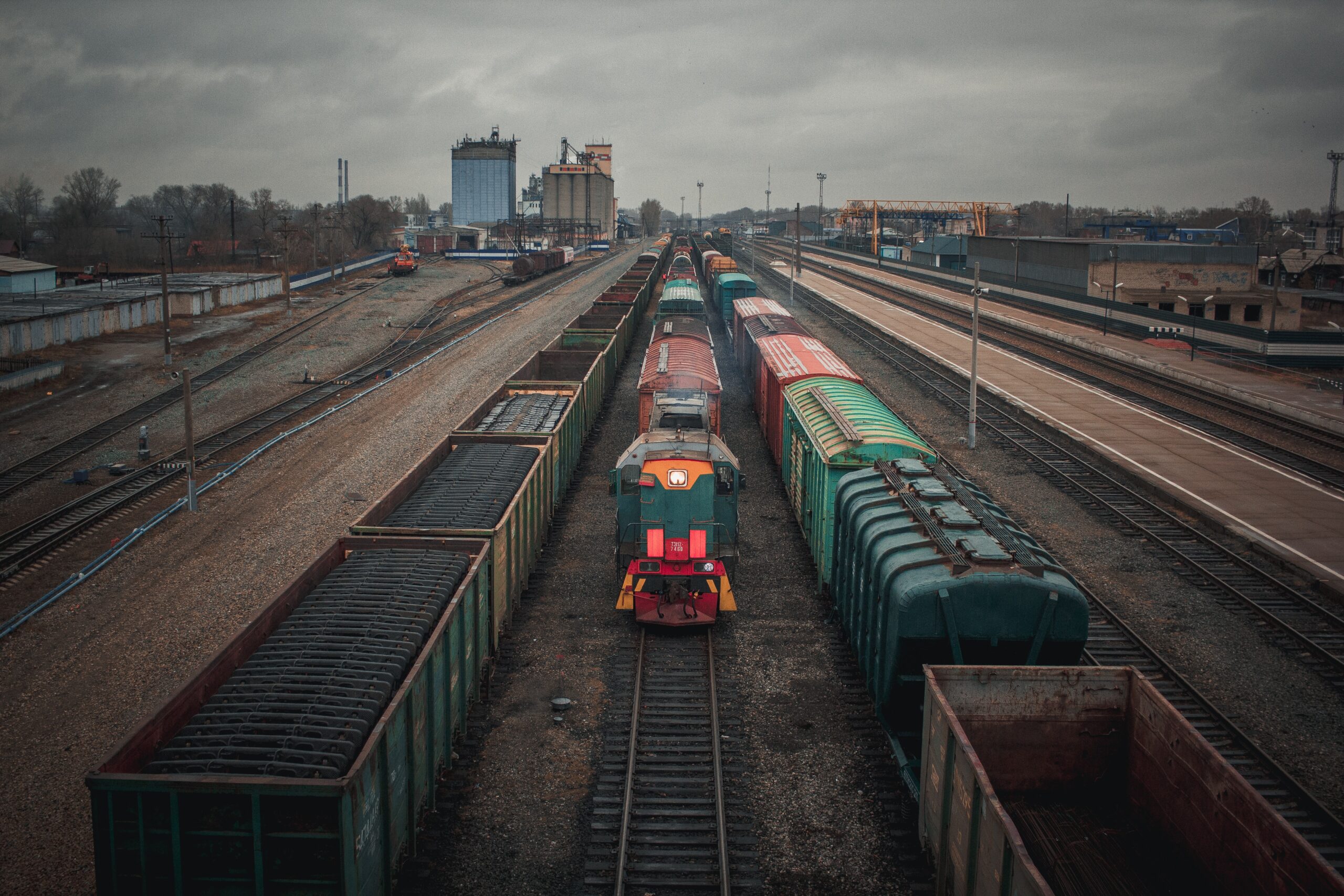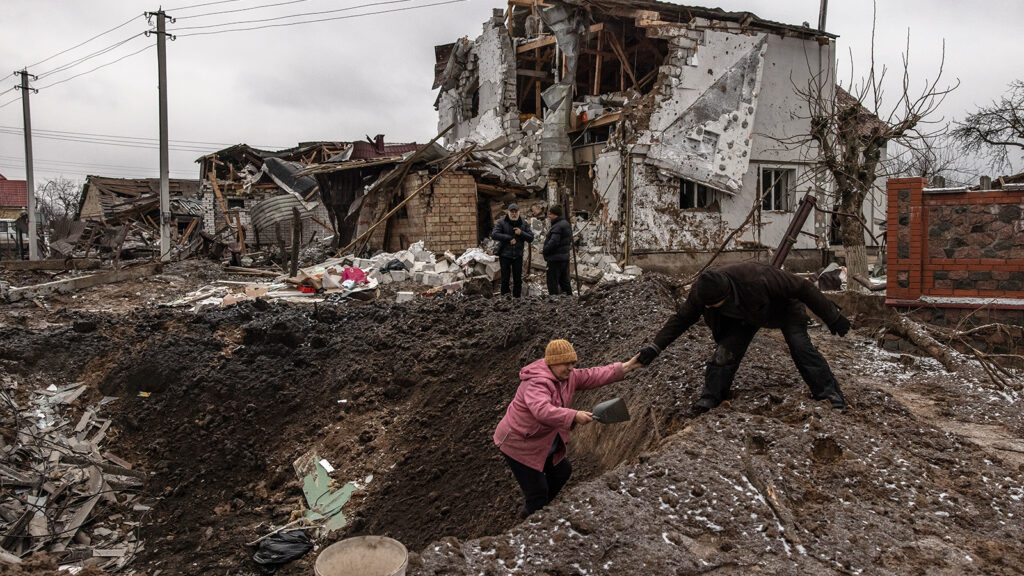How the Ukraine Crisis Is Disrupting Global Supply Chains

Last year, shippers suffering from the chaotic uncertainty in container shipping caused by COVID turned to rail transport as an alternative freight option for the Asia-Europe trade routes. This year, the war in Ukraine will impact supply chains again.
Photo: Unsplash
Global supply chains were starting to recover from two years of upheaval caused by the pandemic when the Ukraine crisis hit. The further disruption caused by Russia’s invasion of Ukraine could cause many companies to rethink their suppliers.
BRINK spoke to Mark Millar, the author of Global Supply Chain Ecosystems and a supply chain expert based in Hong Kong, and asked which supply chains are being most impacted by the crisis.
MILLAR: Even though this is a very fluid and fast-moving scenario, and notwithstanding the terrible humanitarian calamity, it is already clear that the Russia-Ukraine conflict will have far-reaching ramifications for many supply chains.
In particular, there are immediate consequences for ground-based freight networks transporting goods between Asia and Europe by road and rail.
The Asia-Europe Land Route
Last year, shippers suffering from the chaotic uncertainty in container shipping caused by COVID turned to rail transport as an alternative freight option for the Asia-Europe trade routes. In 2021, rail operators ran more than 1,200 freight trains per month between China and Europe, transporting almost 1.5 million containers. Many of these trade routes from China transit through Russia, Ukraine and Belarus on their way to Western European destinations.
The risks for such containerized rail-freight are now prohibitively high, so traders are frantically searching for alternative routes, at a time when the containerized shipping sector is still besieged by port congestion, shipping delays and container shortages resulting in extensive delays and record-high freight rates.
However, just about every supply chain will suffer a negative impact from this crisis, for example, with fuel prices surging and shipping routes being cancelled or diverted.
A Nail in the Coffin of Over-Globalized Supply Chains
Unfortunately, this is another massive disruption for today’s globalized supply chains, on top of two years of COVID-induced supply chain chaos, from which many businesses (and economies) have still not recovered.
There is enormous uncertainty as to whether this crisis could be over by the end of the month, whether it could drag on for years, or worst-case scenario, could trigger a direct military conflict between NATO and Russia.
Whichever the outcome, I think it is another nail in the coffin of our modern-day over-globalized supply chains.
The cumulative disruptions over the last five years from ever-increasing costs in Asia, geopolitical tensions and trade tariffs, the pandemic’s turbulence in global shipping and now the military conflict in Europe have exposed the profound interdependencies and inherent vulnerabilities in globalized supply chains.
BRINK: Are there any critical products that come from Russia and Ukraine (besides oil and gas) that will be disrupted?
MILLAR: In addition to gas and oil, Russia’s top exports include coal, iron, platinum, raw aluminum, sawn wood and copper. So many global commodities markets will be squeezed, and we can foresee some shortages of raw materials.
Food Supplies Will Be Impacted
As both countries are major exporters of agricultural products, we can also expect global food supply chains to be impacted.
Russia exports over $6 billion of wheat annually and is a major producer of vast amounts of the essential raw ingredients for the fertilizer products that are used in produce grown around the world.
Many of the finely tuned just-in-time and lean systems will be replaced or supplemented with business models incorporating buffer inventories and safety stocks. In many scenarios, just-in-time will become replaced by just-in-case.
Meanwhile in Ukraine, two-thirds of its GDP relate to international trade, the foundation of which is a strong agricultural sector. Fifteen percent of global grain exports come from Ukraine, as well as cereals, animal and vegetable oils, and seed oils, together representing 35% of Ukraine’s exports.
A further quarter of Ukraine’s exports are iron ore and steel, including refined electrical machinery, equipment and other mechanical appliances.
BRINK: Do you think this crisis is likely to cause companies to rethink their supply chains and develop suppliers nearer to home?
MILLAR: Absolutely. As a result of COVID, many companies were already re-evaluating their supply chains, exploring options for near-shoring and/or reshoring of their sourcing and production closer to home.
However, reconfiguring and relocating your global supply chain is much easier said than done.
Today’s Supply Chains Cannot Easily Be Moved
Today’s global supply chain ecosystems have been built and fine-tuned over many years. They cannot easily be untangled, unpacked and moved elsewhere. Whether near-shoring or re-shoring, this is a major undertaking. And, of course, you can’t stop your business whilst you’re reconfiguring your supply chain.
The entire ecosystem needs to be reviewed from end to end, considering potential future sources — both the suppliers and their locations — for essential inputs, such as materials and components. Ideally, the new supplier network will be within the same vicinity as the newly relocated manufacturing operations.
For finished goods distribution, new channels and business partners may need to be established — and alternative logistics service providers evaluated and appointed.
Companies must undertake any supply chain reconfiguration initiative as a parallel project, alongside the business-as-usual activities of day-to-day supply chain execution. In terms of resources, the project will consume plenty of management bandwidth and demands the full attention of your A-team. It will incur considerable costs, some inevitable disruption, as well as sizable risk. The timeline to complete the relocation would be measured in years, not months.
So, reconfiguring your supply chain is not for the fainthearted.
But this Ukraine crisis on top of two years of COVID disruptions has surely brought many companies to a tipping point that will result in real action during the coming years on near-shoring and reshoring initiatives. Supply chain 2025 will undoubtedly look significantly different for many companies.
The Knock On Effect for China
BRINK: Is there likely to be a knock-on effect on China?
MILLAR: Inevitably. China is the largest trading partner for both Russia and Ukraine, so those respective bilateral trade flows are going to be curtailed by the conflict.
More importantly, China’s trade with the world will be adversely affected as established trade flows and supply chains become increasingly disrupted.
In particular, the various Silk Road rail-freight corridors — via Belarus and Poland, or Ukraine, or St. Petersburg and Finland — will become dislocated. There are over seventy rail freight routes from China connecting into 174 cities across 23 countries in Europe, offering transit times of just 12-17 days, shaving several weeks off sea freight transit times.
Many of these routes are now completely impractical and unfeasible, resulting in goods becoming stranded en-route and inventory shortages in destination markets.
This will have the greatest impact on goods exported from factories that have relocated inland to China’s midwest, for whom rail freight is a particularly relevant alternative to sea freight. Chengdu in Sichuan province, for example, is almost two thousand kilometers inland from the main export container port in Shanghai.
China will also experience knock-on effects from the broader supply chain implications, such as near-shoring initiatives and regionalization trends, which over the medium term will result in some manufacturing being relocated out of China.
The End of Just in Time?
BRINK: How should companies build greater resilience into their overseas supply chains to avoid being impacted by this kind of crisis?
MILLAR: Supply chain resilience has become the key strategic priority for this decade. Multiple initiatives need to be undertaken, including revisiting the supply base to identify sources closer-to-home and adopting wider deployment of dual- or multi-sourcing strategies, featuring multiple suppliers in multiple locations.
Many of the finely tuned just-in-time and lean systems will be replaced or supplemented with business models incorporating buffer inventories and safety stocks. In many scenarios, just-in-time will become replaced by just-in-case.
Over the medium term, I foresee some large-scale near-shoring activity with many companies adopting a more regional approach — e.g., producing in Latin America for the USA, and serving developed EU markets with products made in lower-cost European nations such as Poland, Hungary or Turkey, potentially also in some north African countries.
The technological advancements and reducing costs in robotics and automation will also enable some businesses to re-shore their production activities back into high labor cost markets, further empowered by increasing availability of Robotics as a Service (RaaS) solutions, which eliminate the need for upfront capital costs, which hitherto proved prohibitively expensive, especially for small- and medium-enterprise businesses.







